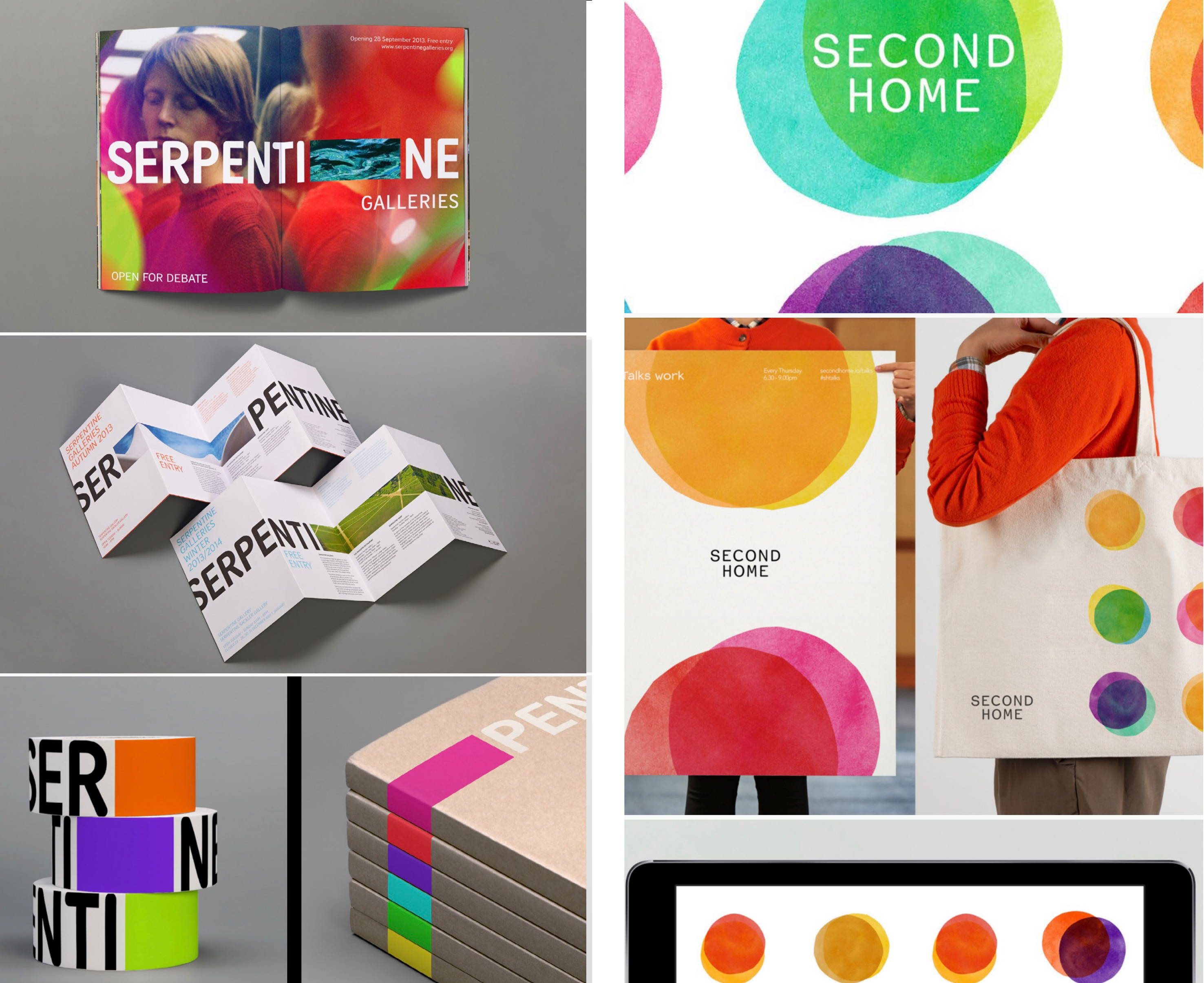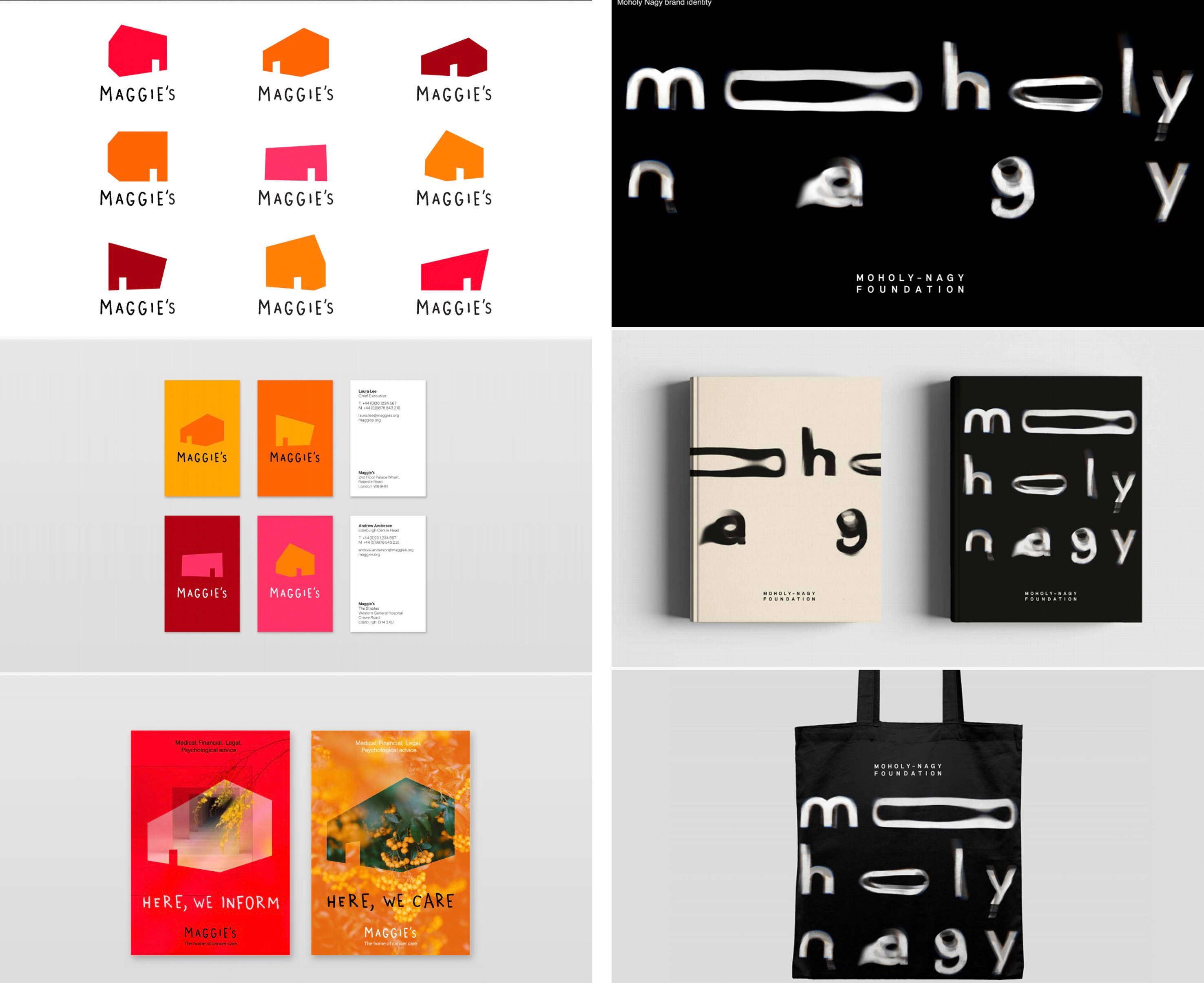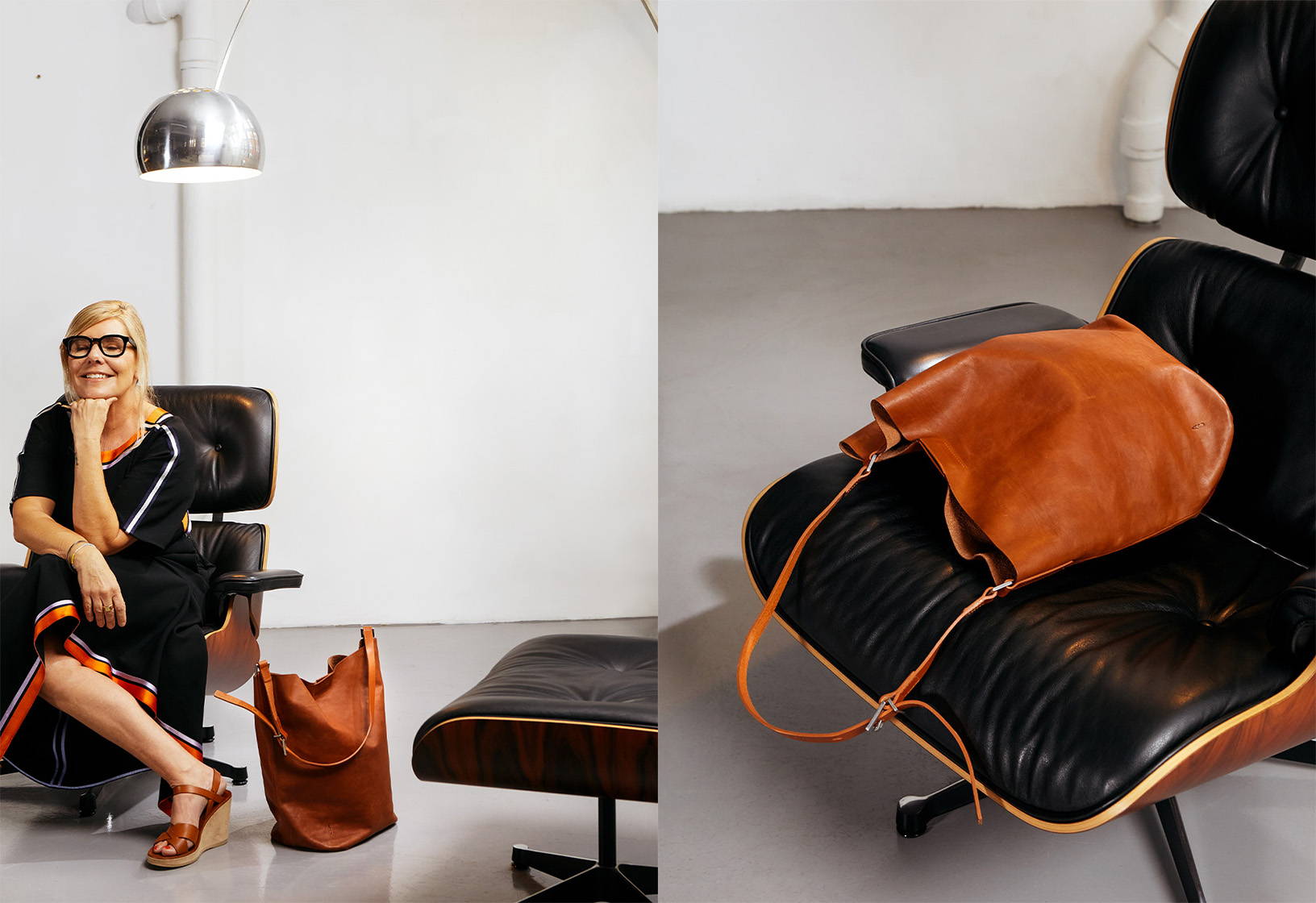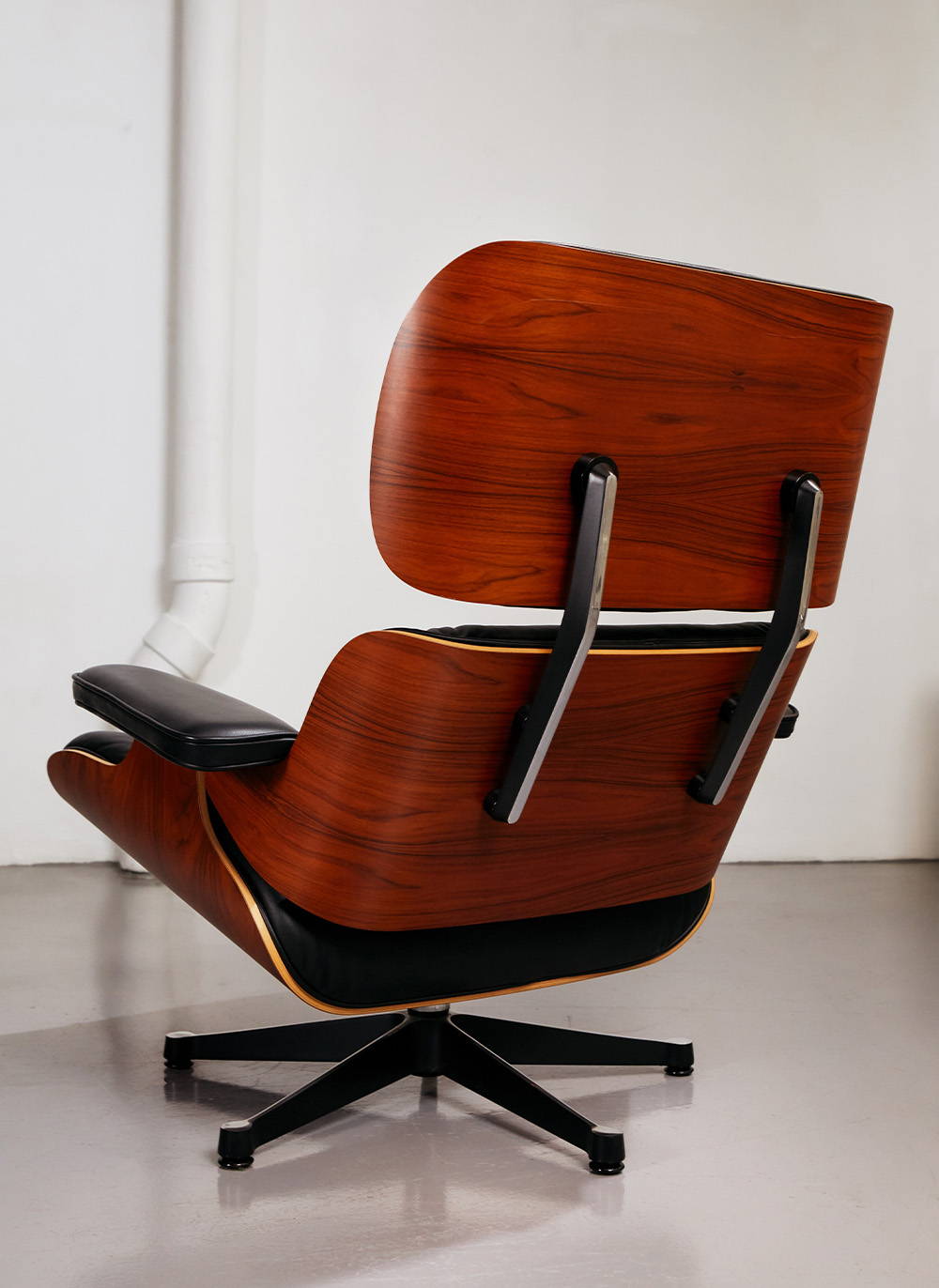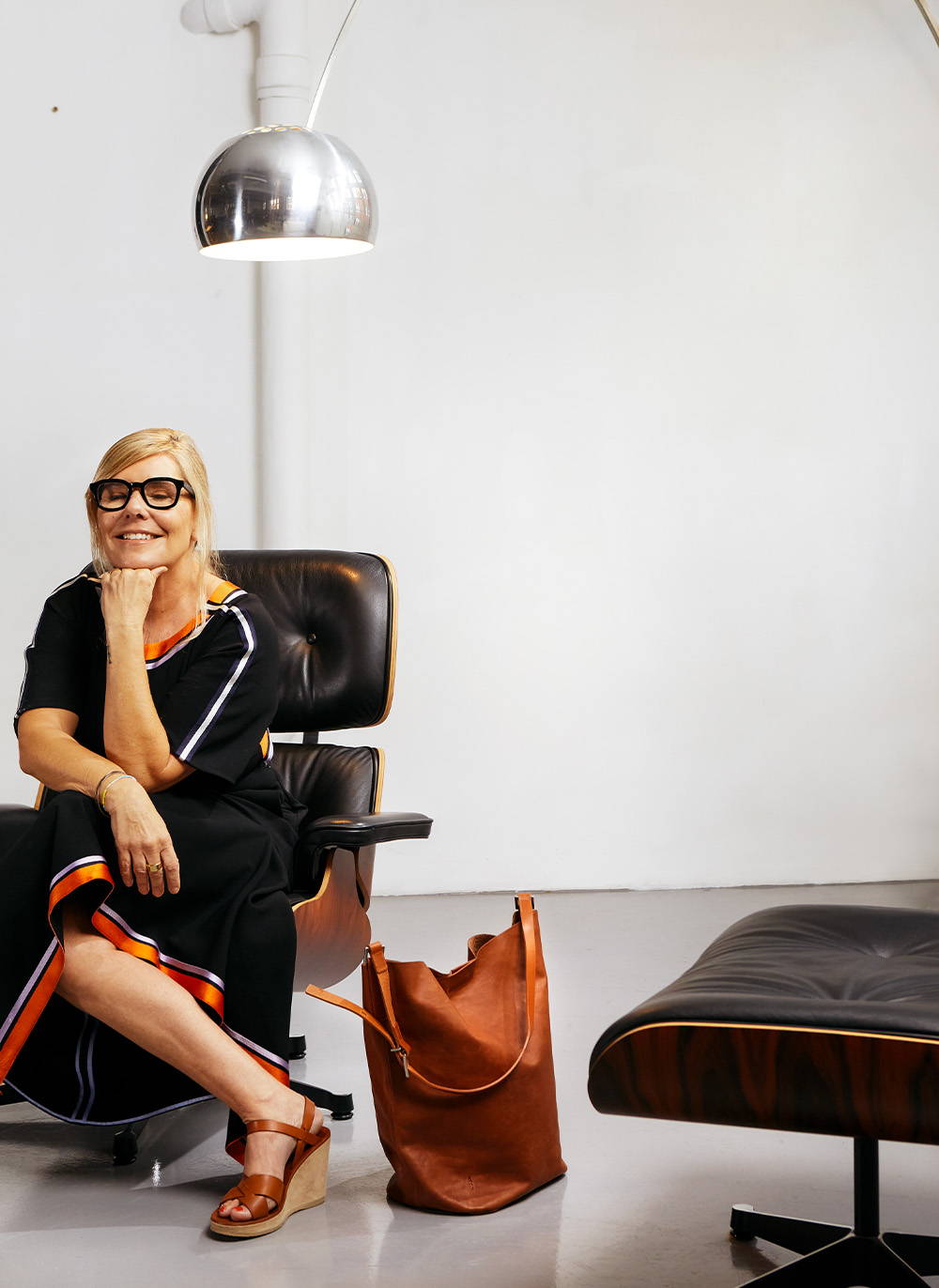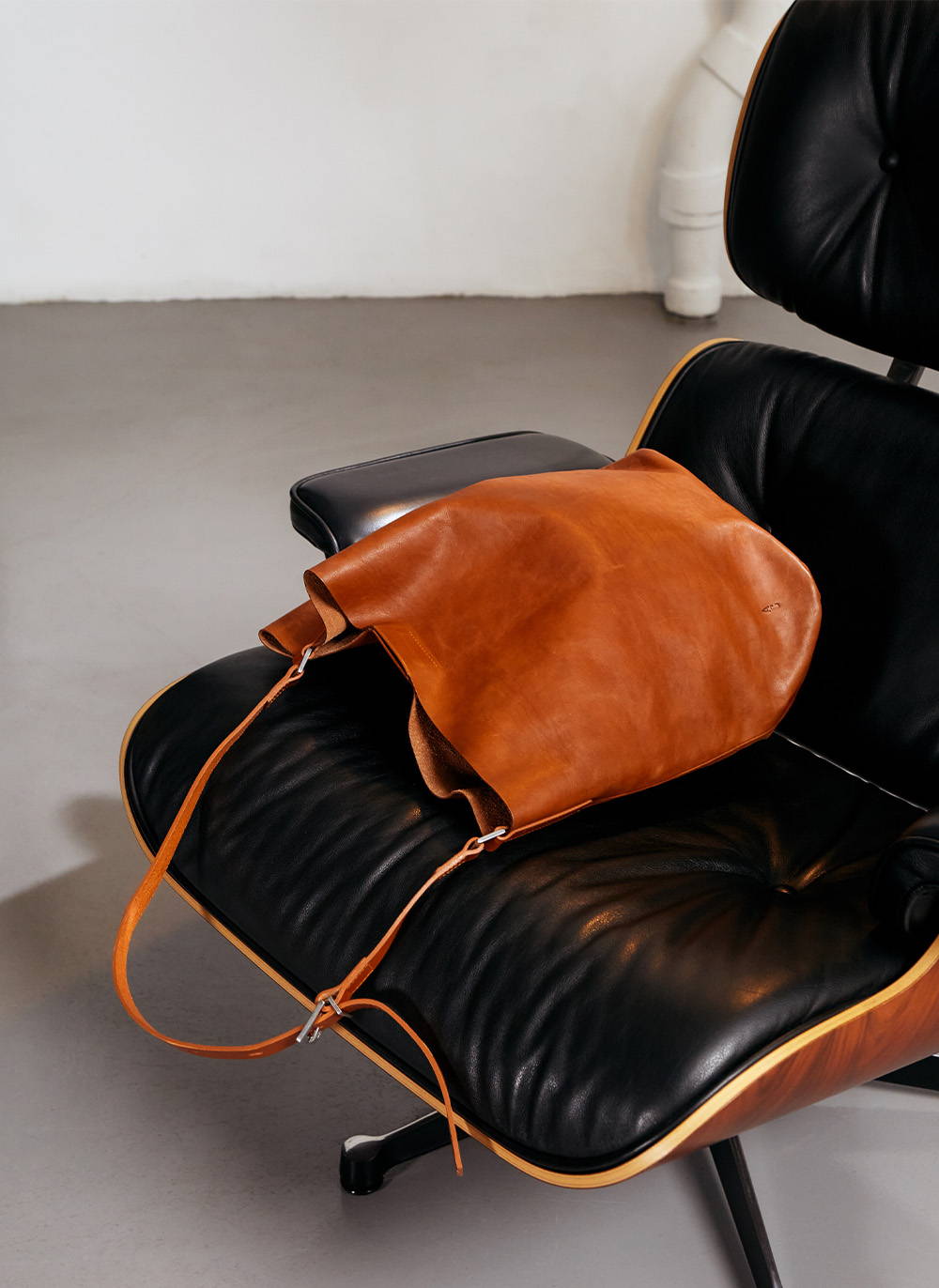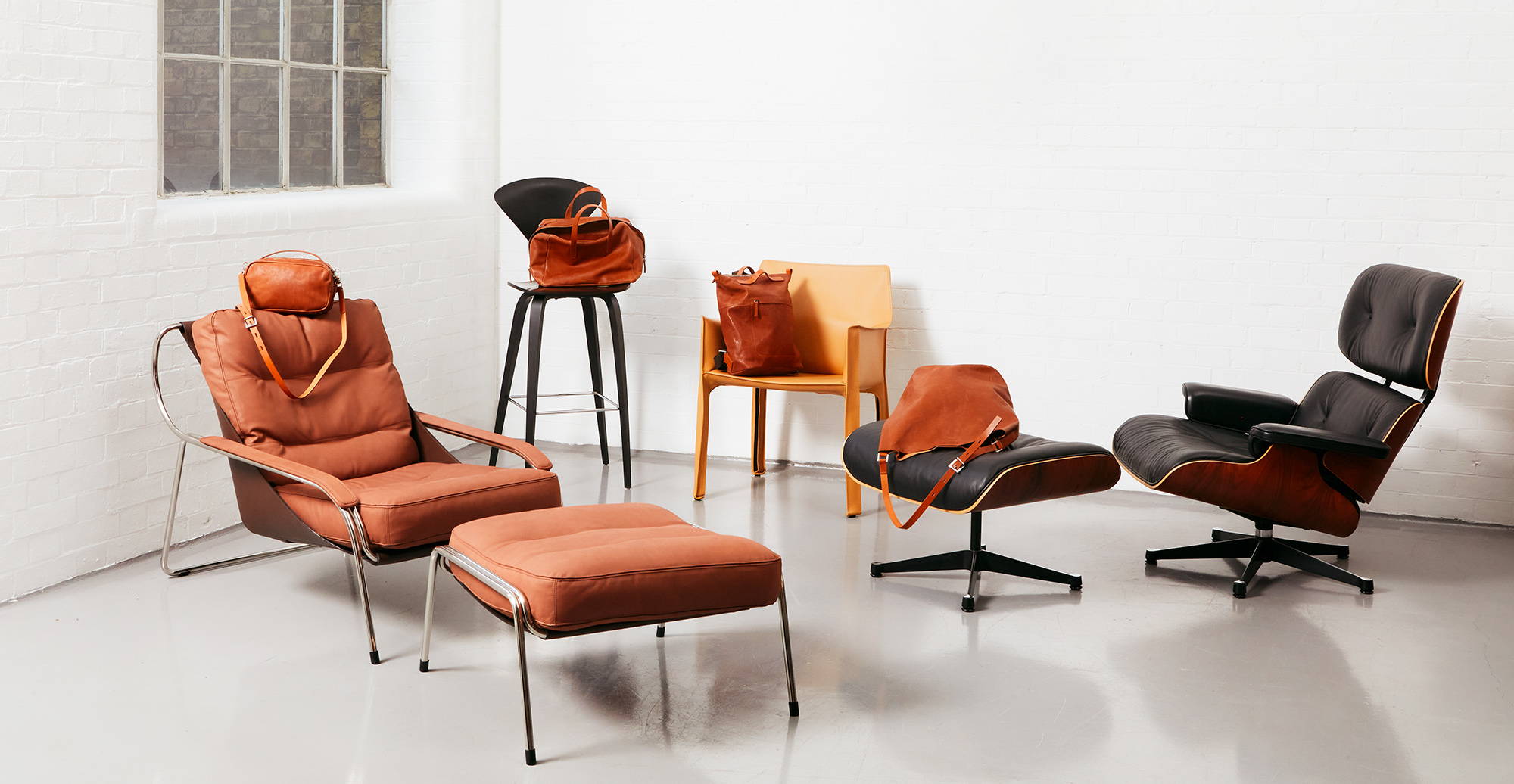
ARAM + ALLY CAPELLINO with MARINA WILLER
Explosive optimistic colour is the calling card of my friend Marina Willer. As partner at Pentagram she is the talent behind some of the most famous logos, you will recognise them. Marina has been buying AC bags for a long time but we got together after she posted a picture of an armful of our waxed bags hanging in her house. During lockdown she suggested a project in the shop which involves a lot of colour and some branches, as well as reimagining our shop sign.
"I always think about classics in my lifetime as modernism and the belief that design, which is the discipline I operate in, can change things for the better " - Marina
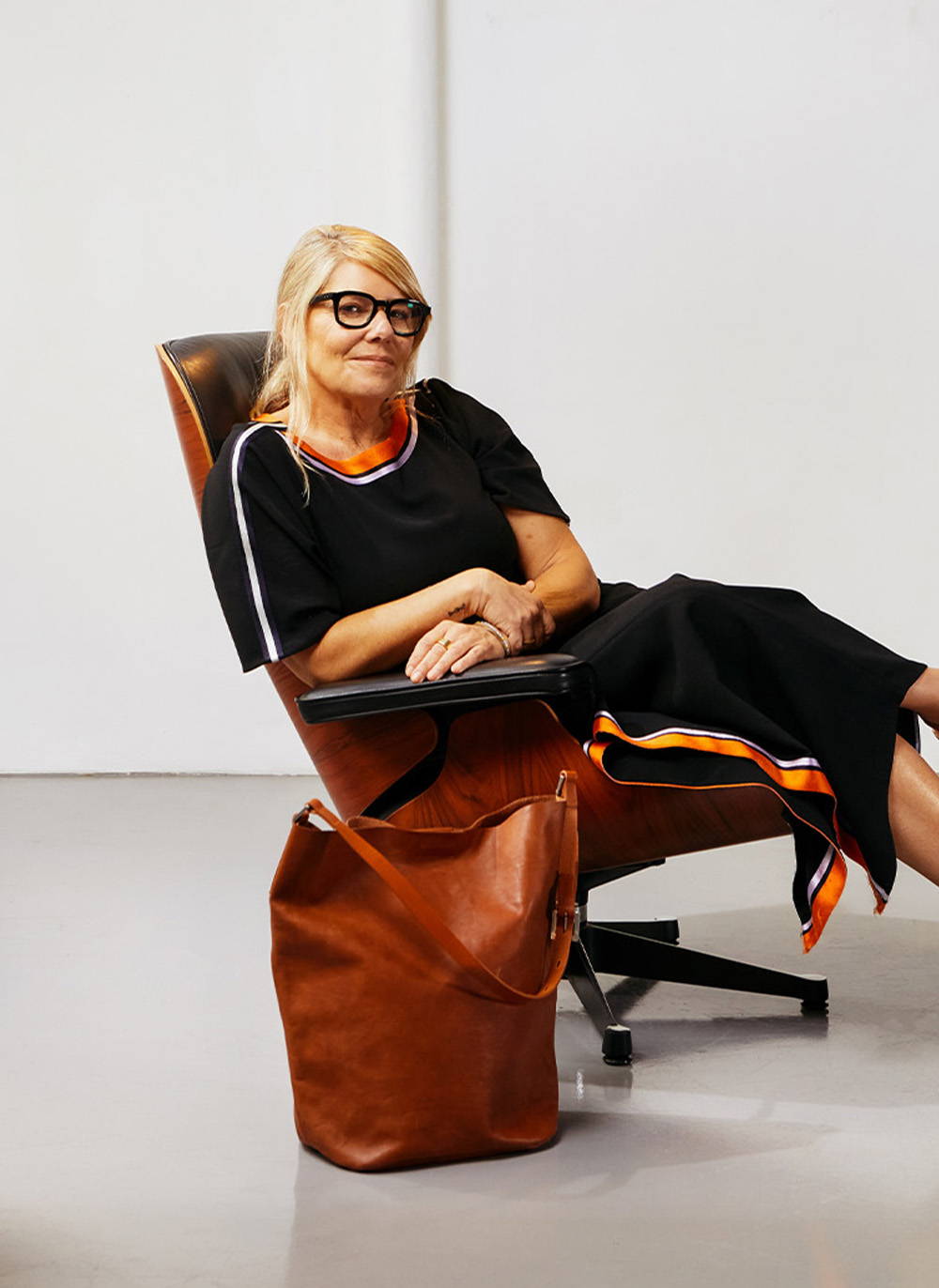
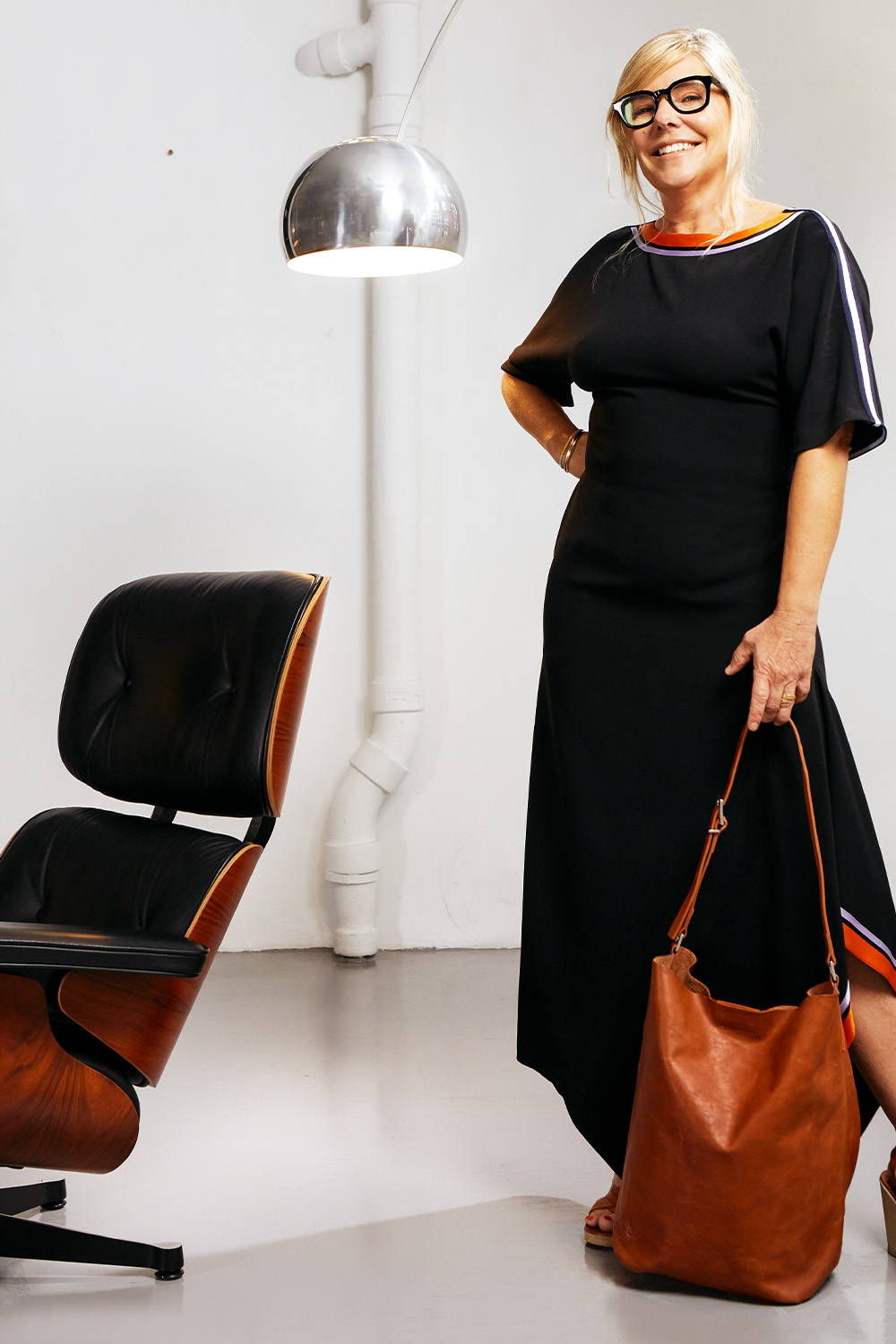
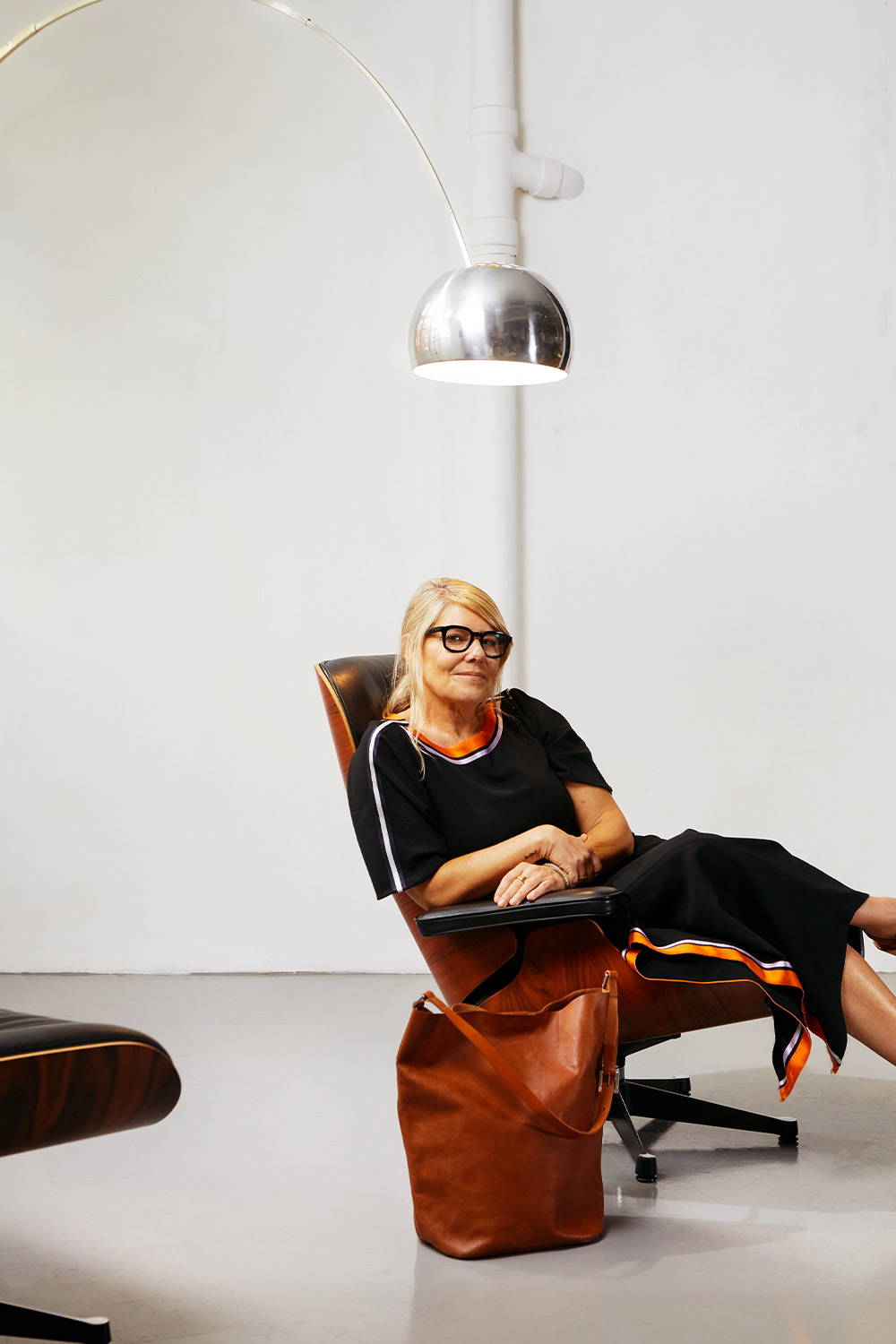
Q: What does the word ‘classic’ mean to you within your world as a Pentagram partner, graphic designer and filmmaker?
A: A classic, to me, is something that is timeless, that is not being seduced by fashion or trends but has a more grounded view. It’s not so much about going with the flow as being able to stand back and have a perspective. I always think about classics in my lifetime as modernism and the belief that design, which is the discipline I operate in, can change things for the better - a certain notion of utopia, in a way. Postmodernism is the opposite of that. It’s nihilism, it’s when you start to not believe in anything, which is very easy to fall for in times like these.
Q: Who or what are your ultimate ‘classic’ designers, filmmakers or films?
A: I have always been interested in films which are less pretentious, less gimmicky. I think of The Godfather, how beautiful the story is and how it defined a certain way of making films which was followed by Hollywood. I also really like Iranian films because they give you time, perspective and space to think. You’re not seduced by the action and the overwhelming suite of effects that you see in cinema today. There is something that puts me off about the excess of gimmicks. So, in terms of films, I think those two examples would be my top choices for their pure simplicity and storytelling.
In terms of design, I think I’ve always been very inspired by modern designers and visionaries: Laszlo Moholy-Nagy, for example, or quite a few who came out of the Bauhaus. I think that a lot of the designers that came out of the Bauhaus inspired our generation and then there are new interpretations which are very special as well, such as Richard Rogers’ architecture. I have been very fortunate to have worked with him. He was an incredible visionary who was able to think about what modernism meant today and who believed in the societal role of architecture and design.
Q: Your work bridges multiple fields. As such, do you find that there is a single, common thread that defines ‘classic’ across the board?
A: If I think about the classics in my lifetime, there is that belief in modernism. Not what didn’t work about modernism, which was the trying to over orchestrate life, but the aspects that did work which were quite radical. It was really about using design as a force for good and I think we are now more than ever in need of those beliefs. There are incredible ways to reinvent how we think about transportation and cities, the things that we consume and consumption in general, and the reshaping of those through design. All of these come from a classic perspective, which is a modernist way of seeing things, but with the perspective of today. Not a nostalgic mid-century celebration of beautiful things, which we can all get seduced by, but the belief that we can change things for the better.
Q: That leads nicely into our next question which is how do you maintain the essence of ‘classic’ within an age of instant gratification?
A: It’s about creating space - space to think and space for the audience to read the stories in the way that they want to read them, not just to be bombarded and seduced by the sheer amount and dramaticity of effects. Again, what is beautiful about Iranian films (or the work of a director like Andrei Tarkovsky, who is completely different) is that they are all about giving space. I made one feature film in which I tried to talk about a subject that was very loaded, over exposed and explored, and how we got to such a bad place in humanity in terms of intolerance. My attempt with that film was to create a lot of space to think and a narrative that was very calm and contemplative, rather than imposing on or manipulating the audience to feel things with the bombardment of effects.
In design, for me, it is the same. I mentioned Moholy-Nagy as an incredible influence because he was really radical in his exploration of the crossover between disciplines: film and photography, sculpture, painting, illustration and graphics. He was very experimental, as well as purposeful, with a degree of purity. I sometimes turn my back to effects and the seduction of things that you can do with the digital world. In the end, what we create is shared digitally and that’s fine, but it doesn’t need to impose a certain style or aesthetic because there are many other ways we can experiment and which lead to much more unique outcomes - those which are more accidental, less controlled or replicable.
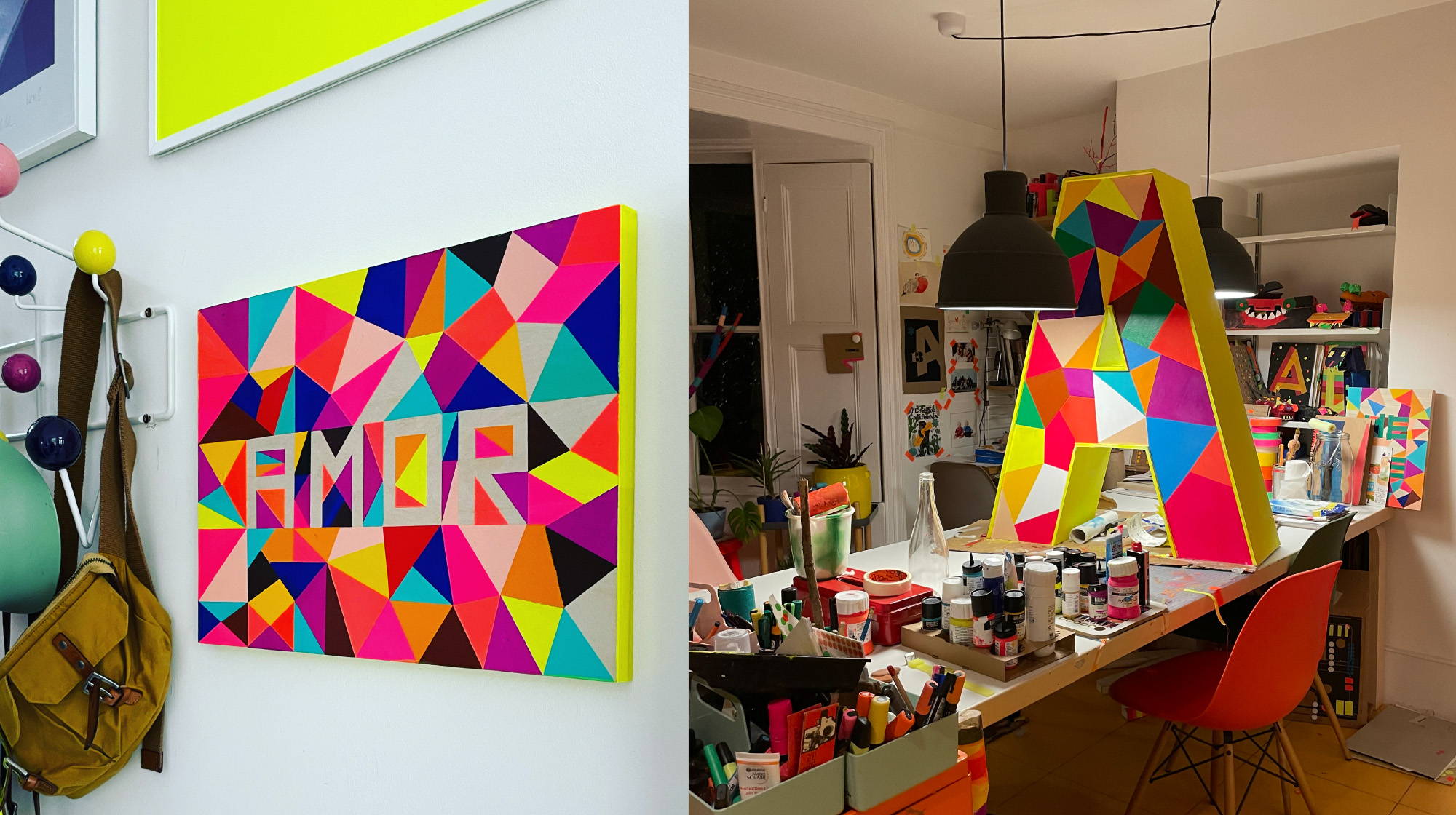
Q: What is the value of having a strong background knowledge of the ‘classics’ when pushing the boundaries of design?
A: I always think it’s important that we know why we’re choosing to use form in a certain way, for example when we designed an exhibition about Stanley Kubrick’s work (again, he is another director who I perceive as a classic in the sense that the films he made almost never age and are still as provocative as they were then). If you think about Space Odyssey, he directed that before we had been to the Moon, before we had been to space. He was trying to anticipate those things and the notion of the International Space Station. The design elements in that and all of his films were based on modernism.
Today, there are so many fashions that people just fall into the pressure of doing things like everybody else. I think having points of reference helps us to think about the meaning behind the decisions that we make, whether we are designing or drawing, painting or making a film. When you read a book, the way that the type is laid out influences how you understand and read it. Or in film, the way it is framed. Kubrick framed everything from a single point perspective that was really symmetric, he wanted to give control and perhaps the feeling of distance between the audience and the story. If you think of The Godfather films, the orchestration of decisions is based on a classic view, but there is a sense of time. Like you mentioned, today we are exposed to a rhythm and an accelerated way of reading. When you see a trilogy like The Godfather, it puts you in a different time and space because Francis Ford Coppola takes the time to tell the story.
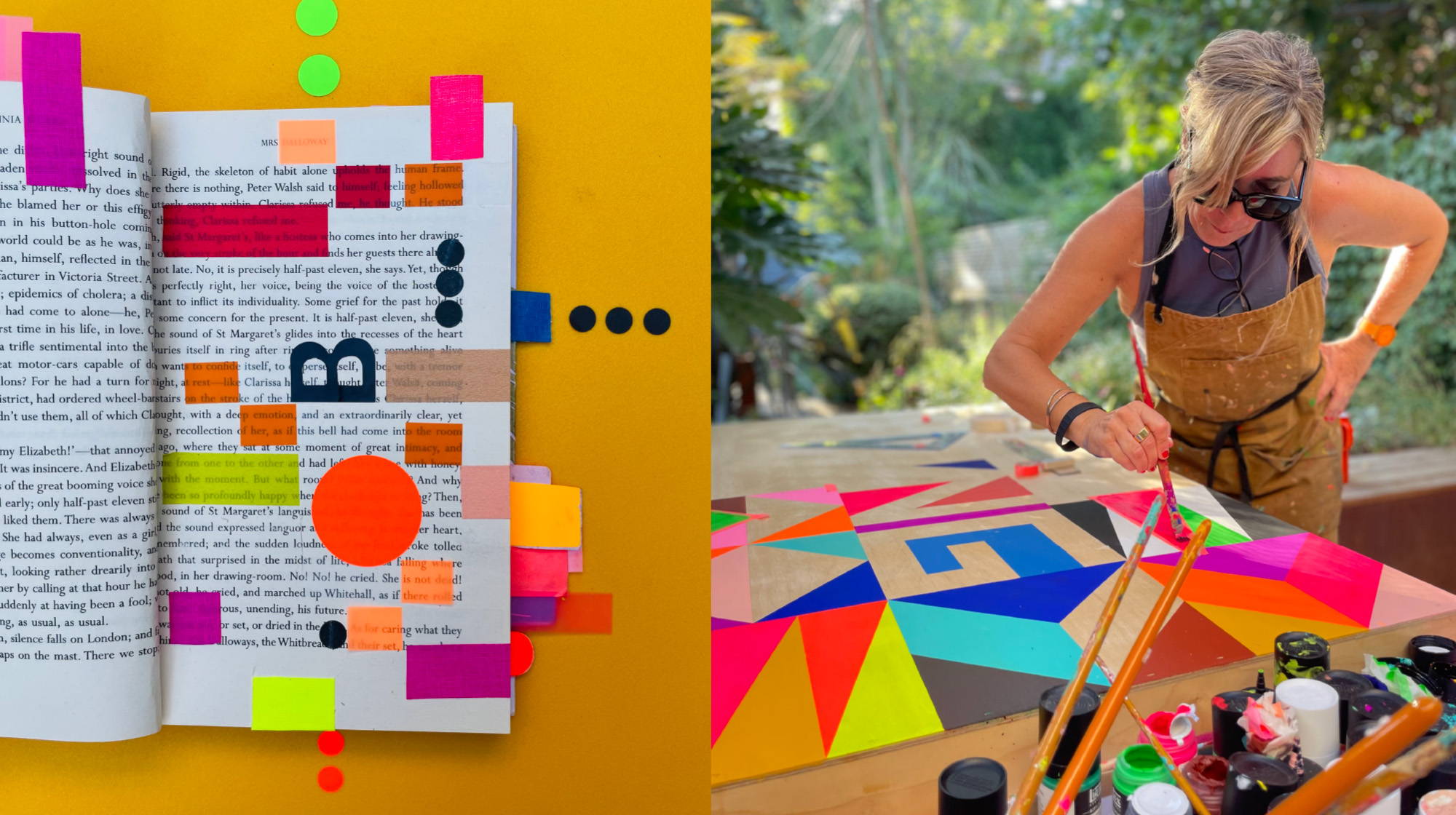
Q: What are your current researching and methods?
A: The good thing about how we work at Pentagram is that we have several projects of a different nature at the same time. So, besides my own love for film, there is this combination of projects which each give me a different point of entrance. I am always doing projects for social and not-for-profit organisations and that also puts me in a place where I have to think about change. How can we transform society and create a language that feels as if it’s inviting people to participate, rather than a one-way language which imposes certain beliefs? And then there are always design and branding projects for organisations in arts and culture that pose the question of what our relationship with audiences should be and how we can create more participative systems of open dialogue, rather than what was perhaps much more part of the era of modernism which was this idea of the one-person genius. That is one of the aspects that I think has had to change. Today, it’s much more about collaboration and generating things together - it’s about collective origination of ideas, rather than solo practice.
The Eames Lounge Set Large Santos and Ally Capellino Lloyd Calvert Leather Bucket Bag.
Q: Does working with ‘classic’ institutions, and the stability they possess, allow a greater sense of freedom?
A: I’m a partner at a design studio which I think you could refer to as a classic. We’ve been around for fifty years and are very much a result of the utopian views of the Sixties, which were about transferring control from the companies to the designers. All of the partners, including myself, are creatives - we’re all designers and we all believe in the power of design. That position is quite privileged and I think it helps give us the freedom to explore and experiment, to attract projects and clients that come to us because they really want to work with a design studio that is so established, admired and recognised. In this sense, I see having a classic position, having earned it (I joined ten years ago as a partner but I’ve inherited this incredible platform), as a really lucky place to be.
For example, when I did the branding for Tate (not alone, but I was the designer leading the project and strategies and there was a team around me), that was an incredible opportunity to create something much more experimental because they had already been established in the field of art and they were questioning and rethinking the meaning of art. That position allows you the freedom to be provocative because you’re supposed to be leading the conversation. They’ve earned a place that gives you or even demands of you to be forward thinking - but in a way that is still classic, because the worst thing you could create for one of these very well respected organisations would be something that made people feel as though they are trying too hard or creating something frivolous that dumbed down the discussion on the subject that they lead. So, it’s important that we don’t just create something that is fashionable. For us, the responsibility is to create something that in ten, twenty, fifty years’ time might still be representing them accurately because it was done in a way that was unique to them and meaningful.
Q: Lastly, how do Ally Capellino and Aram tie in with your personal concept of ‘classic’?
A:I’ve been a massive fan of both brands, Ally Capellino and Aram, for many years - I think because they value design and the meaning behind form, but also because they both stand for quality and things that last and things that are timeless. The amount of craftsmanship that you see in any object, whether something created by Ally Capellino or sold at Aram, is incredible. You know that they are made in a way that is robust, that is solid.
